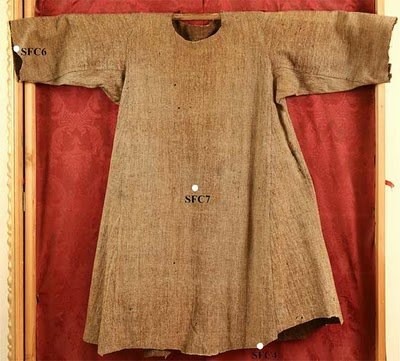-

-
Scientific testing appears to prove that a garment found in Cortona, Italy, belonged to the saint.
St Francis is one of the most popular Catholic holy men of all time. His community, the Order of the Friars Minor, commonly known as Franciscans, are easily spotted in their hooded robes with rope belts and sandals, and as a mendicant (begging) order, their vow of poverty is hardcore.As with many of the most venerated saints, there is no shortage of churches that wish to bring their congregations closer to St Francis by acquiring his holy relics. There are four churches that have preserved tunics which are believed to have been worn by St Francis, but after a round of scientific testing, conducted in 2007, this number has been reduced to three. However, scientific testing suggests one of these is the real deal.
A team of physicists from the Italian Institute for Nuclear Physics (INFN) in Florence, subjected fibers from two tunics reputedly worn by the Little Poor Man of Assisi to radiocarbon dating. The first came from the Church of St Francis in Cortona, Italy, and the second from the Basilica of Santa Croce, in Florence.
Jeanna Bryner, from Live Sicence, reports that the garment from Santa Croce was found to have been made between the late 13th and late 14th centuries. As Saint Francis is known to have died in 1226, it was determined that this tunic could not have been worn by St Francis himself.
The tunic from Cortona, however, was dated between 1155 and 1225, firmly within the saint’s lifetime. It is believed that this tunic was brought to Cortona by St Francis’ successor, Friar Elias, along with two other relics attributed to the saint: an embroidered cushion and a book of the Gospels.
There has been no scientific testing performed on the other two tunics said to have been worn by St Francis. These two relics remain preserved in the city of Assisi, St Francis’ hometown, and in the Sanctuary of La Verna in Tuscany.
Source: Aleteia





